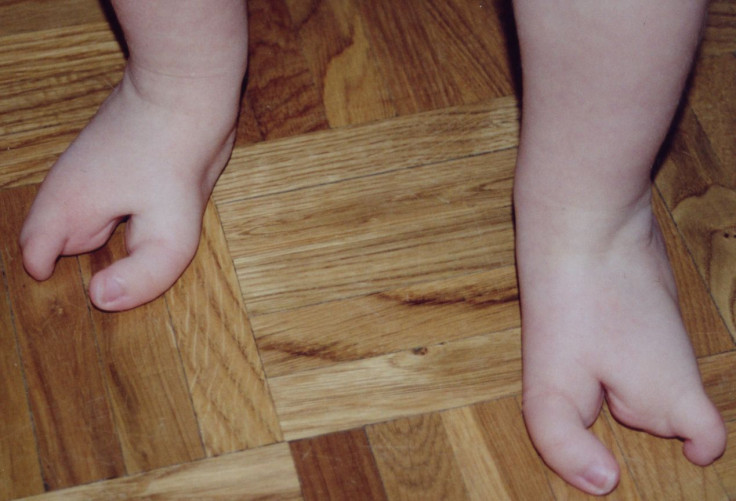5 Strange Genetic Mutations, From Unbreakable Bones To Fish Odor Syndrome

Strange genetic mutations often play into the storylines of Hollywood action films, but in reality you don’t have to be a superhero to be a “mutant.” In fact, genetic mutations exist in the DNA of every person on Earth, and helped to shape humans into what we are today. Some mutations, however, are more striking and strange than others. Here is a list of some of the most fascinating genetic mutations found in man.
Ectrodactyly
People with ectrodactyly, also known as a split-hand/split-foot malformation or “lobster claw hand,” have a cleft where the middle finger or toe should be. This causes their hand or feet to take on a claw-like appearance. According to io9, it’s caused by several genetic factors, including deletions, translocations, and inversions in chromosome 7. Along with the physical appearance, this malformation is also often associated with hearing loss or hearing problems.
Unbreakable Bones
Low-density lipoprotein receptor-related protein 5, (LRP5) is one of the genes that controls your bone density. Some mutations to this gene can cause degenerative diseases such as osteoporosis which leave the bones especially fragile, but other mutations to this gene can drastically increase bone density and make bones nearly impossible to break.
HIV Resistance
Although highly treatable today, HIV infections still seriously compromise the immune system, putting patients at risk of developing AIDS and dying from disease complications. Most importantly, it is still incurable and rapidly spreading. However, there is a genetic mutation that allows some individuals to be virtually immune to HIV infections.
HIV infects the body by entering cells via protein receptors called CD4 and co-receptor called CCR5, but in some individuals, a mutation in their CCR5 co-receptors makes it so that HIV can never enter the cell and therefore infect the body. People with one copy of this mutation have increased resistance to the virus, and if infected, the disease progresses less rapidly. Individuals with two copies of the mutation, however, are basically immune to HIV infections, What A Culture reported.
High Altitude Sickness Resistance
According to WebMD, altitude sickness occurs when you cannot get enough oxygen from the air at high altitudes. This can lead to discomforting symptoms such as a headache, loss of appetite, and trouble sleeping. However, there is a genetic mutation found in cultures who have historically lived in high altitudes which makes the oxygen in their blood to be used highly efficiently, allowing them to live and work at altitudes of over 4000 metres with no ill effects, What A Culture reported.
Trimethylaminuria
Individuals with the condition, also known as Fish Odor Syndrome, cannot break down trimethylamine, a naturally occurring compound. According to io9, trimethylaminuria is found in sweat, urine, exhaled breath, and other bodily secretions; without the ability to break it down individuals with this condition will constantly smell like rotting fish, rotting eggs, garbage, or urine. The condition is caused by mutations of the FMO3 gene.
Read More:
5 Genetic Mutations Linked To Brain Cancer Might Explain Why Tumors Grow In The Brain: Read Here
Genetic Mutations, Explained; You’re Probably A Mutant, But It’s A Far Cry From X-Men: Read Here



























